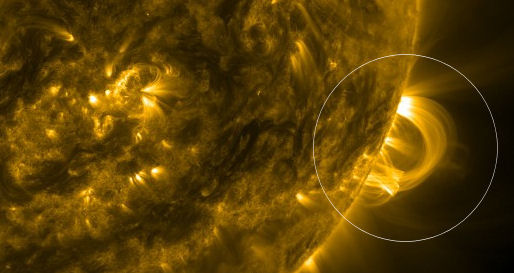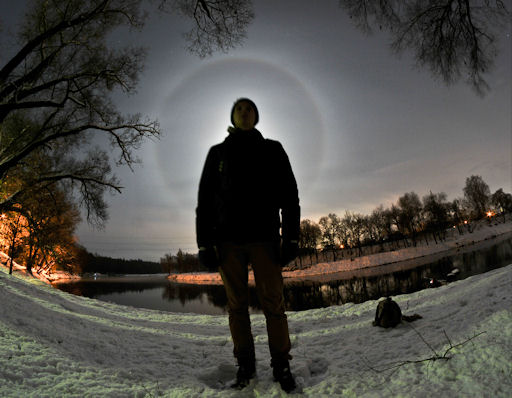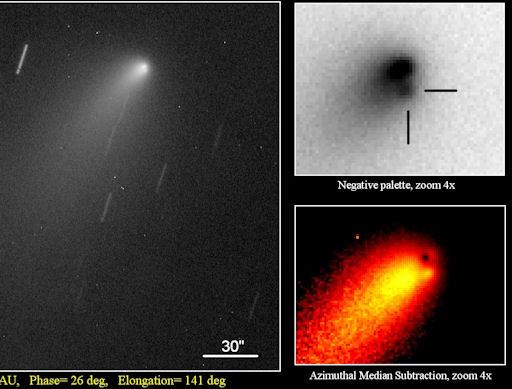Thirty-five new items have just been added to our Meteorite Jewelry collection. Browse the Space Weather Store for something out of this world. | | |
HUNTER'S MOON: There' a full Moon coming on Monday, Oct. 29th, and according to folklore it has a special name: the Hunter's Moon. Some native American tribes gave it that name to mark the autumn hunts that topped off their food supplies for the coming winter. Think of that when the bright orb rises tomorrow, and enjoy the Hunter's moonlight.
SLOW ERUPTION: The magnetic canopy of a sunspot group just over the sun's southwestern limb slowly erupted on Oct. 28th. When the hours-long eruption was over, this bright arcade formed over the blast site, marking the location where the explosion occured:

Arcade loops appear after many solar flares. It is how the magnetic fields of sunspots settle down after a significant eruption. This particular eruption hurled a massive CME into space, but Earth was not in the line of fire. As the movie shows, the explosion was photogenic, but not geoeffective. Solar flare alerts: text, voice.
Realtime Space Weather Photo Gallery
BE ALERT FOR MOON HALOS: The Moon is waxing full and the northern hemisphere is experiencing the deepening chill of autumn. That means it's time to be alert for Moon halos. Martinsh Taube photographed this specimen last night in Valmiera, Latvia:

"We were on a late night walk through the city when we saw it," says Taube.
Moon halos are caused by ice in high clouds. Moonlight passing through six-sided crystals is bent into a luminous ring 22o in radius; the fuller the Moon, the brighter the halo. The Moon will be nearly full on Oct. 28th and completely full on Oct. 29th, so those are good nights to look. More specimens may be found in the gallery:
Realtime Moon Photo Gallery
A COMET IN TROUBLE? Amateur astronomers have been keeping a close eye on Comet 168P/Hergenrother since October 1st when it suddenly brightened 500-fold, from 15th to 8th magnitude. At the time, the comet was making its closest approach to the sun (1.4 AU). Some observers speculated that solar heating caused the fragile comet to break apart. On Oct. 26th, a group of astronomers found evidence to support this idea. "Using the Faulkes North (F65) telescope," writes Ernesto Guido et al., "we detected a fragmentation in Comet 168P."

"Our images, taken on Oct. 26th, reveal the presence of a secondary nucleus, or fragment, about two arcseconds away from the main central condensation of comet 168P." This is probably a chunk of rocky ice emerging from the haze of gas and dust that surrounds the main nucleus, still hidden inside. Comets are notoriously fragile, so its no surprise that Comet 168P/Hergenrother is breaking apart in this way.
The only question is, what happens next? Will the comet spit in two, with two heads and two tails, one tracking the fragment and the other tracking the parent? Or is this the prelude to a more complete disintegration? Amateur astronomers are encouraged to monitor developments while the comet remains bright enough to see through backyard telescopes. Here are the comet's coordinates. For best results, we recommend the Comet Hunter Telescope.
Realtime Comet Photo Gallery
Realtime Aurora Photo Gallery
Realtime Noctilucent Cloud Photo Gallery
[previous years: 2003, 2004, 2005, 2006, 2007, 2008, 2009, 2011]

